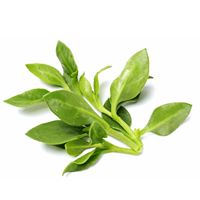 Andrographis is from a genus of plants in the acanthus family. The precise number of Andrographis species is difficult to establish, although estimates range from 19 to 44. Andrographis paniculata is one of the best known species in this genus and has a long history in many forms of traditional medicine.
Andrographis is from a genus of plants in the acanthus family. The precise number of Andrographis species is difficult to establish, although estimates range from 19 to 44. Andrographis paniculata is one of the best known species in this genus and has a long history in many forms of traditional medicine.
All parts of Andrographis have an extremely bitter taste, which is the source of many of its common names. This plant is known as Maha-tita in north-eastern India, which means "king of bitters." It is also called Bhumi-neem, which means "neem of the ground," The neem tree in India also has a very bitter taste. Andrographis is also called Hempedu Bumi in Malaysia, which means “bile of earth.”
Andrographis originates from India, although it is now cultivated throughout Southern Asia. It can exceed three feet in height, and prefers shady, moist conditions. It has narrow blade-shape leaves that can grow to three inches in length and one inch in width. The small flowers grow in spreading clusters known as racemes. The fruit of Andrographis is a capsule less than an inch in length that contains many seeds.
The primary active component of Andrographis is andrographolide, which is chemically classified as a bicyclic diterpenoid lactone. Andrographolide is primarily concentrated in the leaves and was first isolated in 1911. The biochemical actions of this component include the deposition of neutrophils in the peritoneum and the reduction of cytokine. The primary health benefits of andrographolide deal with its ability to support healthy inflammation management.
The most common uses of Andrographis involve the support of the immune system. It may also support digestive health, healthy inflammation management and joint function.
Andrographis may help manage the discomfort caused by inflamed tonsils. This use typically involves a high dose of about six grams per day.
Early research indicates that daily ingestion of Andrographis extract may help may help manage digestive conditions. The regimen in this study consisted of daily doses of Andrographis for eight weeks.
Some studies show that Andrographis may help support the immune system, especially when combined with Siberian ginseng.
Andrographis may help support joint function, especially as you age. This regimen may last for up to 14 weeks.

A compromised immune system is one of the most common general signs that you may need Andrographis. Chronic illnesses such as a cold or flu often indicate a weakened immune system. Digestive problems such as constipation, diarrhea, intestinal gas and stomach discomfort may also indicate that you may benefit from Andrographis supplements.
You may also benefit from taking Andrographis if you suffer from skin conditions such as itchiness, ulcers and wounds that are slow to heal. Loss of appetite, hemorrhoids and kidney problems are additional signs that you may need Andrographis.
Maha-tita, "king of bitters", Bhumi-neem, Hempedu Bumi, Andrographis paniculata

As women age, hormonal changes during menopause can have a significant impact on their skin. The decrease in estrogen levels can lead to a variety of skin issues, including dryness, thinning, and increased wrinkles. But did you know that what you ...

Naturally Manage Inflammation Turmeric Background and Benefits Turmeric is an herbaceous plant known scientifically as Curcuma longa. It belongs to the Zingiberaceae family, which includes ginger. Tumeric has rhizomes rather than true roots, which are the primary source of commercial value for th...

Support for Overall Health Eleuthero (Siberian Ginseng) Background and Benefits Eleuthero is a common name for Eleutherococcus senticosus, a deciduous, woody shrub that originates from eastern Asia, including China, Japan, Korea and Russia. Additional common names for this plant include eleuthero...
Shipping calculated at checkout